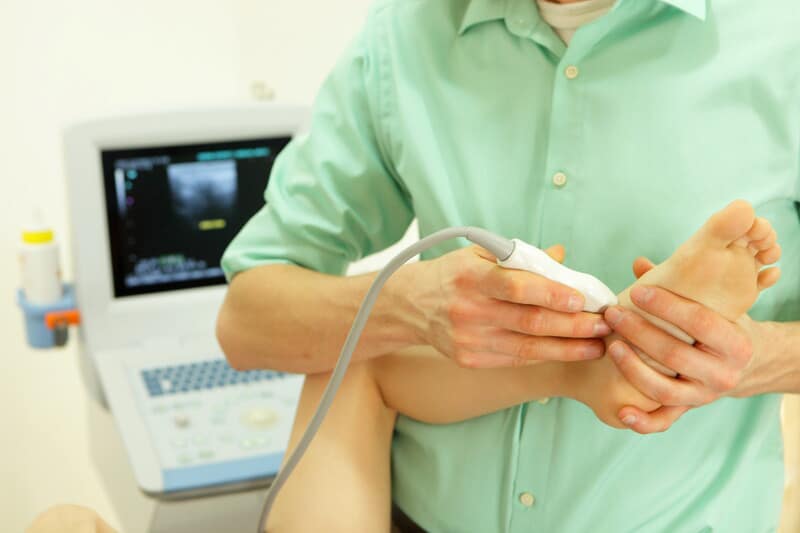Podiatry specialty deals with the diagnosis and treatment of diseases, injuries, and defects of the human foot. Podiatrists treat diverse foot related conditions such as toenails, heel spurs, fallen arches, plantar fasciitis, and foot/ankle injuries. They also specialize in treating issues related to diabetes and other systemic medical conditions like Peripheral Arterial Disease (PAD) and Advanced Arterial Ischemia. Certain services are reimbursable. Podiatry medical billing and coding is a complex area for many practices. Many insurers including Medicare cover certain podiatry treatments. Medicare Part A, Part B, or Part C plan will provide coverage only if the podiatry care meets two basic requirements – the care must be “medically necessary” and the care must be provided by a healthcare provider who participates in Medicare.
While Medicare Part A (Hospital Insurance) covers the cost of podiatry care you receive if/when you are formally admitted to a Medicare-approved hospital, Part B pays 80% of the Medicare-approved amount for covered foot care and Part C Medicare Advantage plans often cover everything included in the original Medicare Part A and Part B coverage. The podiatry services covered under Medicare Part B need to be provided by a physician (M.D.) or a Medicare-certified podiatrist (doctor of podiatric medicine, or DPM).
Will Medicare cover all podiatry treatments?
Certain conditions and their treatment options that may be considered medically necessary include Hammertoes (cortisone injections to decrease the inflammation), Morton’s Neuroma (using a metatarsal pad, cortisone injections or surgical intervention), Plantar Fasciitis (physical therapy for proper stretching exercises, wearing a night splint, cortisone injections or surgery), Bunions (bunion pad, toe spacer or shoe inserts or surgery), Stress fractures (surgical intervention), and Peripheral Neuropathy. Medicare also covers other podiatry services such as foot care for patients with chronic disease, treatments for wound care, hyperbaric oxygen therapy for hypoxic wounds and diabetic wounds of the lower extremities.
Medicare also covers a foot exam every six months for patients with diabetes, diabetic peripheral neuropathy and loss of protective sensations. Diabetes and therapeutic shoes and inserts for people with diabetes-related foot conditions are covered differently by Medicare Part B.
Foot care related services that are not generally covered by Medicare are –
- treatment of Flat Foot (prescription of supportive devices)
- routine foot care and
- orthopedic shoes and other supportive devices for the feet
Routine podiatry services that are not covered by Medicare include cutting or removal of corns and calluses, trimming, cutting, clipping, or debriding of nails and other hygienic and preventive maintenance care. Service for routine care will be considered as additional, mandatory, supplemental, or optional supplemental benefits.
Even if Medicare covers certain podiatry services, patients will be responsible for some out-of-pocket costs including Part B Deductible, Part B coinsurance and Part B copayment (if the treatment is provided in a hospital outpatient setting).
When it comes to supportive foot devices, Medicare patients with diabetes and severe diabetic foot disease may be covered for the furnishing and fitting of one pair of custom-molded shoes or one-pair of extra-depth shoes once per year as long as the podiatrist prescribes them. Medicare also covers two additional pairs of inserts for custom-molded shoes or 3 pairs of inserts for extra-depth shoes each calendar year. As long as the supplier accepts assignment, patients will likely pay 20% of the Medicare-approved amount, and the Part B deductible will apply.
Medicare Supplement Insurance (Medigap)
Some of Medicare’s out-of-pocket costs will be covered by Medicare Supplement Insurance (Medigap). All standardized Medigap plans will help patients receive at least partial coverage for:
- Medicare Part A coinsurance and hospital costs
- Medicare Part B coinsurance or copayment
- First three pints of blood
- Part A hospice care coinsurance or copayment
Along with some deductibles, co-insurance and co-payments, Medigap also covers other costs not covered by Medicare Parts A & B (Original Medicare). Insurance verification is the key thing podiatry practices must consider before providing any treatment, as patient’s ineligibility is the key reason for most claim denials.



0 Comments